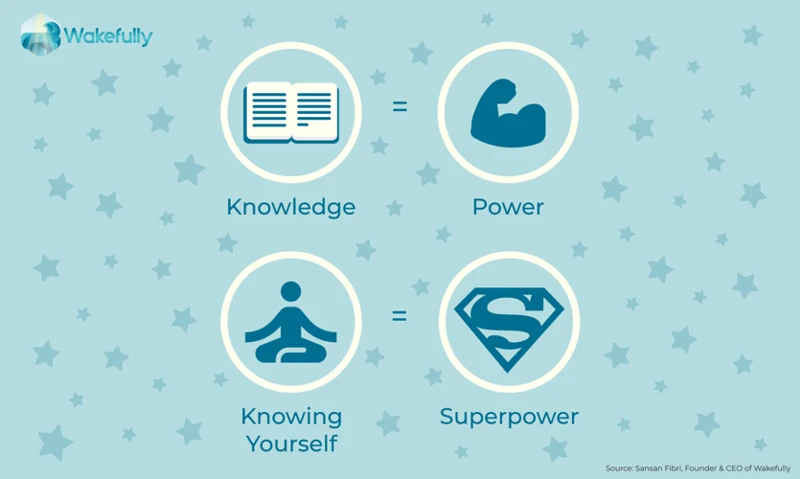Introduction

As we sleep, our minds take us on a journey through a world of dreams that can be both mysterious and puzzling. However, these subconscious experiences can provide valuable insights into our waking lives if we learn to interpret them. Keeping a dream journal is a powerful tool for unlocking the secrets of our dreams and harnessing their potential benefits. In this article, we will explore the reasons for keeping a dream journal and the ways in which it can improve memory, provide personal insights, enhance creativity, and even help overcome nightmares. So, let’s delve deeper into the world of dreaming and discover the hidden treasures of our subconscious minds.
What is a Dream Journal?
A dream journal is a written record of your dreams. It can be kept in any format you like, whether it’s a physical notebook, a digital document, or an app on your phone. The main goal of a dream journal is to record the details of your dreams as soon as possible after waking up. This way, you can capture the nuances of your dreams before they fade away from your memory.
Keeping a dream journal is a personal practice that can help you explore the deeper levels of your mind. It can provide insight into your thoughts, emotions, and experiences that you may not be aware of in your waking life. It’s a tool that can help you better understand yourself and your subconscious.
By keeping track of your dreams, you can identify common themes, patterns, and symbols that appear in your unconscious mind. A dream journal can also help you analyze and interpret the meaning of your dreams. Additionally, it can be used to track your progress in terms of remembering your dreams and developing the ability to lucid dream.
A dream journal is a useful tool for exploring your inner world and unlocking the mysteries of your dreams. It can provide valuable insights into your mind and help you develop a deeper understanding of yourself.
Why Keep a Dream Journal?
One of the most intriguing aspects of the human experience is dreaming, and keeping a dream journal is an effective way to unlock the mysteries of the subconscious mind. Here are some compelling reasons why you should keep a dream journal:
| Reason | Explanation |
| Improved memory | Recording dreams can improve memory recall and retention, leading to better recall of waking experiences. |
| Personal insight | Examining dream patterns and themes can provide insight into subconscious thoughts and emotions, leading to greater self-awareness and personal growth. |
| Lucid dreaming | By recording dreams and becoming more aware of dream content, individuals may be able to gain control over their dreams and experience lucid dreaming. |
| Improved creativity | Recording and reflecting on dream imagery can inspire new ideas and enhance creativity in a range of creative pursuits. |
| Overcoming nightmares | Recording and analyzing nightmares can help individuals identify emotional triggers and develop coping mechanisms for managing these feelings. |
| Tips for keeping a dream journal | Effective strategies for making dream journaling a habit and recording details even of seemingly insignificant dreams. |
By keeping a dream journal, one can not only enhance their personal insight but also experience additional benefits such as improving memory recall, gaining control over their dreams, and fostering creativity. So, start your dream journal today and begin exploring the wonders of your subconscious mind.
Improved Memory

As we go about our daily lives, our brains receive an overwhelming amount of information. With so much going on, it’s not surprising that we can struggle to remember things. However, did you know that keeping a dream journal can actually help improve your memory? This may seem counterintuitive at first, but studies have shown that recording your dreams can have a significant impact on your ability to remember details from your waking life. In this section, we will explore the science behind why this works and how to effectively use a dream journal to improve your memory.
How Memory Works During Sleep
During sleep, our brain processes and stores information from the previous day, a process known as memory consolidation. It is important to note that different stages of sleep play different roles in memory consolidation.
NREM sleep:
- During Non-Rapid Eye Movement (NREM) sleep, the brain processes and consolidates declarative memories, which are memories of facts and events.
- The hippocampus, a region of the brain vital for memory processing, replays the neuronal firing patterns that occurred during the learning of the information.
- As the hippocampus sends these patterns to the neocortex, they become a part of our long-term memory.
REM sleep:
- Rapid Eye Movement (REM) sleep is associated with the consolidation of non-declarative memories, which are memories of skills, habits, and emotions.
- During REM sleep, the brain replays the activities that occurred during the day, allowing the consolidation of these non-declarative memories to occur.
- REM sleep is also associated with the formation of new neural connections which enhance learning and creativity.
By understanding how memory consolidation occurs during sleep, we can better appreciate the value of keeping a dream journal as a tool for improved memory.
Keeping a Dream Journal for Memory Improvement
As we sleep, our brain is busy consolidating new memories and making connections between pieces of information. Keeping a dream journal is a powerful tool for memory improvement, as it can help us retain more of what we experience while we sleep. Here are some ways in which a dream journal can help:
- Retention of Dream Content: By recording our dreams as soon as we wake up, we are able to commit more details of the dream contents to our memory.
- Reinforcement of Memory: Writing down our dreams reinforces the neural pathways associated with our dream experiences, making them easier to recall in the future.
- Association of Memory: The act of recording our dreams can help us associate them with past experiences or current priorities, strengthening these associations in our minds.
In addition to these benefits, keeping a dream journal for memory improvement can help us tap into the wisdom of our unconscious mind. Dreams sometimes offer solutions to problems that we are struggling with, and by keeping a journal, we may be able to better remember and act on these insights.
Personal Insight

Reflecting on our inner selves and gaining deeper understanding of our emotions and thoughts is a journey that many of us yearn for. The world of dreams presents an intriguing pathway to this self-discovery, and keeping a dream journal can offer us a portal to uncover the mysteries of our subconsciousness. Through analyzing our dream patterns and identifying underlying emotional triggers, we can unlock the door to deeper personal insight and understanding. In this section, we will explore how keeping a dream journal can help you on this journey of self-discovery.
Analyzing Dream Patterns and Themes
One of the most fascinating benefits of keeping a dream journal is the ability to gain personal insights by analyzing the patterns and themes that emerge in your dreams. By identifying recurring images, emotions, or situations, you can gain valuable insights into your subconscious mind and your waking life. Here, we will explore some key ways to analyze dream patterns using a dream journal.
One method of analyzing dream patterns is to create a table with two columns: one for the recurring pattern or theme and the other for your interpretation or association with that pattern. By tracking these patterns over time, you can begin to see deeper connections and meanings behind your dreams. For example, if you frequently dream about water, you might interpret it as representing your emotions or the flow of your life. By delving deeper into this symbol and its meaning in your life, you may uncover valuable insights about how you navigate emotional situations or handle change.
Another way to analyze dream patterns is to use highlighting or bolding to draw attention to recurring symbols or themes. This can help you see patterns that may not have been immediately apparent, and can also help you identify common themes that are linked to specific types of events or emotions. For example, if you frequently dream about falling, you might highlight those phrases or images and then reflect on what was happening in your life or mind leading up to those dreams.
No matter what method you use for analyzing dream patterns, it is important to approach it with an open mind and a sense of curiosity. Dream symbols and patterns can be deeply personal and unique to each individual, so the meaning behind them may not always be immediately clear. However, by taking the time to reflect on your dreams and explore the patterns and themes that emerge, you can gain valuable insights into your inner world and use that knowledge to enhance your waking life.
Identifying Emotional Triggers
One of the most important benefits of keeping a dream journal is the ability to identify emotional triggers that may be affecting your inner state. Dreams have been found to contain symbolic representations of our deepest fears, desires, and subconscious. By writing down your dreams and analyzing them over time, you can start to see patterns and themes that may indicate certain emotional triggers.
To help with this process, consider creating an html table to organize your dream patterns and themes. One column of the table could be devoted to specific recurring dream symbols, such as flying or falling. Another column could focus on the emotions that the dream elicits, such as fear or happiness. Finally, a third column could be for any life events or circumstances that may be connected to the dream.
By identifying these patterns, you can start to explore any underlying emotional issues that may be affecting your life. For instance, if you find that many of your dreams involve being lost or trapped, this may suggest feelings of overall anxiety or lack of control in your life. By acknowledging and addressing these emotions, you can begin to take steps towards greater emotional health and well-being.
Remember, identifying emotional triggers may take time and requires an open and honest reflection. Don’t be afraid to seek the help of a mental health professional if you feel overwhelmed. With patience and self-compassion, however, keeping a dream journal can be a powerful tool for understanding your emotional world and improving your overall quality of life.
Lucid Dreaming

One of the most fascinating experiences one can have is the ability to control and actively participate in their dreams. This phenomenon is known as lucid dreaming and has intrigued people for centuries. By achieving lucid dreaming, one can essentially turn their dreams into a playground where the possibilities are limitless. However, this experience can be difficult to achieve without practice and dedication. In this section, we will explore how keeping a dream journal can aid in the pursuit of lucid dreaming, and how it can help you gain further understanding of this mysterious, yet exciting phenomenon.
What is Lucid Dreaming?
Lucid dreaming is a fascinating phenomenon that occurs when a person becomes aware that they are in a dream while still asleep. This experience can be extremely vivid, and individuals can exert some control over their dream environment and their actions within it. The concept of lucid dreaming has been known for centuries, and it has been the subject of many studies and researches.
The following are some key features of lucid dreaming:
- Increased awareness that one is dreaming while still asleep
- The ability to control one’s actions and the dream environment
- Vivid and realistic experiences that can rival waking life
- The ability to explore and experiment with different scenarios that may not be possible in waking life
Lucid dreaming is not the same as vivid dreaming or daydreaming. Instead, it is a unique state of consciousness that occurs during sleep. While lucid dreaming is not common, some people may experience it naturally, while others may learn how to induce it through various techniques such as reality checks, meditation, and dream journaling.
Lucid dreaming is an exciting and intriguing experience that allows individuals to explore new realms of their minds and consciousness. With the help of a dream journal and other techniques, anyone can learn to induce lucid dreaming and unlock the mysteries of their sleeping mind.
Using a Dream Journal for Lucid Dreaming
Lucid dreaming is the ability to become aware that you are dreaming while you are still in the dream state. This can be an exciting and thrilling experience, and it’s also a skill that can be developed with practice. Keeping a dream journal can be a helpful tool in achieving lucid dreaming.
One technique for achieving lucid dreaming is to perform “reality checks” during waking hours. This is when you check to see if you are dreaming or awake. By making this a habit, you are more likely to perform the same check during a dream and become aware that you are in a dream state.
Using a dream journal to support reality checks can help you become more aware of your dream patterns and themes. By recording your dreams and identifying common elements, you may start to recognize these elements as triggers that cue you to perform a reality check.
Another technique for achieving lucid dreaming is to set an intention before you go to sleep. This could be a simple phrase like “I will have a lucid dream” or a specific goal, like flying in a dream. Writing down this intention in your dream journal can help reinforce it in your mind before you fall asleep.
Dream journaling can also be used to analyze and reflect on your lucid dreams. By recording details of your lucid dreams, you can assess how successful you were in achieving lucidity, what techniques worked well for you, and what you can improve on in future attempts.
Here’s an example of how you can use a table to organize information about using a dream journal for lucid dreaming:
| Technique | Description | Example |
|---|---|---|
| Reality Checks | Checking to see if you are dreaming or awake | Counting your fingers or testing gravity |
| Setting Intentions | Deciding on a specific goal or phrase to help achieve lucidity | Intending to fly in a dream or saying “I will have a lucid dream” |
| Reflection and Analysis | Recording details of lucid dreams to learn from them and improve future attempts | Reflecting on what worked well, what didn’t, and setting goals for future attempts |
A dream journal can be a valuable tool in achieving lucid dreaming. It can help with reality checks and setting intentions, as well as provide a record for analysis and reflection on your lucid dreams.
Improved Creativity

Dreams have long been a source of creative inspiration, from the surreal artworks of Salvador Dali to the famous “dream pop” music genre. However, not everyone is aware of the full extent of the connection between dreaming and creativity. In fact, keeping a dream journal can be a powerful tool for unlocking and enhancing one’s creative potential. By recording and reflecting on the imagery and themes that arise in our dreams, we can tap into a rich source of inspiration and insight that can inform our artistic pursuits in profound ways. So if you’re looking to boost your creativity, consider giving dream journaling a try.
Capturing Inspiration from Dreams
One of the many benefits of keeping a dream journal is the potential to capture inspiration from your dreams. Dreams are a unique and creative landscape that can be mined for new ideas and inspirations that you may not have considered while awake. Here are some ways you can use your dream journal to capture inspiration:
- Identify recurring symbols or themes: Dreams often use recurring symbols or themes to convey deeper meanings. By identifying these symbols and paying attention to how they are used in your dreams, you can gain new insights and ideas that you can incorporate into your creative projects.
- Draw or sketch dreamscapes: Dreams often involve vivid and surreal landscapes that can be difficult to describe in words alone. By drawing or sketching these dreamscapes, you can capture the atmosphere and mood of the dream more effectively.
- Explore dream characters: Dreams can be populated with a wide variety of characters that can range from familiar faces to complete strangers. Paying attention to the relationships and interactions between these characters can inspire new ideas for character development in your writing or art.
- Freewrite based on dream themes: If you wake up with a strong impression or feeling from a dream, try freewriting about it in your dream journal. This can help clarify your thoughts and ideas, and may lead to new insights and inspiration.
By incorporating the unique and creative world of your dreams into your creative process, you may find that you unlock new depths of inspiration and ideas to draw from. Your dream journal can serve as a rich resource for capturing these ideas and incorporating them into your writing, art, or other creative endeavors.
Using Dream Imagery for Art and Writing
Dreams have been a source of inspiration for artists and writers for centuries. The use of dream imagery in art and writing can add depth and complexity to creative projects. Here are some ways to use dream imagery for art and writing:
- Symbolism: Dreams can be full of symbolic imagery that can be used in art and writing to add deeper meaning to characters or themes. For example, a dream of falling could represent a character’s fear of failure, and could be used to build the character’s backstory or motivation.
- Mood: Dreams can also provide a vivid sense of mood or atmosphere that can be used in artistic and literary works. A dream of wandering through a misty forest could inspire a painting or a scene in a story where the protagonist is lost and in search of their way.
- Setting: Dreams can also provide richly detailed settings that can be incorporated into art and writing. A dream of walking through an abandoned city could inspire a post-apocalyptic novel or a painting of a desolate urban landscape.
Using dream imagery for art and writing can be a powerful tool for creativity. By recording and analyzing your dreams in a dream journal, you can access a wealth of imaginative material that can be used in your creative projects. Whether you’re a writer, artist, or both, making use of your dreams can take your work to new heights.
Overcoming Nightmares

For many individuals, nightmares can be a source of fear and anxiety. These unsettling dreams can leave one feeling shaken and distressed even after waking up. However, recording these nightmares in a dream journal can be a helpful tool for overcoming them. By examining the details and patterns in these dreams, individuals can gain a deeper understanding of their fears and triggers. Through this process, they can develop coping mechanisms and strategies to reduce the occurrence and intensity of their nightmares. Let us explore the therapeutic benefits of recording nightmares in a dream journal.
The Therapeutic Benefits of Recording Nightmares
Recording nightmares in a dream journal can have therapeutic benefits for those who experience them. Here are some ways:
- Increased awareness: Writing down nightmares allows individuals to confront and acknowledge their fears and anxieties. This can help in increasing their self-awareness and understanding of their own psyche.
- Catharsis: Recording nightmares can serve as a form of catharsis, releasing negative emotions that may have been suppressed during waking hours. It can be especially helpful for individuals who have experienced trauma or have PTSD.
- Identifying triggers: The content of nightmares is often directly linked to a person’s subconscious concerns or past experiences. By recording the details of the nightmare, the individual can identify potential triggers for their bad dreams.
- Detecting patterns: Keeping track of nightmares allows an individual to recognize patterns that can indicate recurring themes or issues in their subconscious. This can help them address these issues before they arise in their daily life.
- Improved sleep: By confronting their fears and anxieties through writing about nightmares, individuals can often experience improved sleep quality and better control over their dreams.
Remember, writing about nightmares in a dream journal should not be seen as a substitute for seeking professional help if the nightmares are impacting daily life. However, it can be a valuable tool in addressing and understanding subconscious fears and anxieties.
Identifying Triggers and Coping Mechanisms
Recording your nightmares in a dream journal can be a powerful tool for not only understanding the root causes of your nightmares, but also developing coping mechanisms to overcome them. By analyzing the themes and patterns that emerge in your nightmares, you can start to identify the specific triggers that lead to them.
Identifying Triggers:
- Look for common themes in your nightmares, such as being chased or falling
- Consider any recent stressful events or changes in your life that may have contributed
- Take note of any recurring people or objects in your nightmares
- Think about any unresolved emotional issues you may be experiencing
Once you have identified the triggers that lead to your nightmares, you can start to develop coping mechanisms to help you overcome them.
Coping Mechanisms:
- Practice stress-management techniques, such as deep breathing or meditation, before bed
- Avoid caffeine or alcohol before bedtime
- Create a relaxing bedtime routine to help calm your mind before sleep
- Engage in physical activity during the day to help reduce stress and anxiety
- Consider therapy or speaking with a mental health professional to address underlying emotional issues
By using your dream journal to both identify triggers and develop coping mechanisms, you can take control of your nightmares and improve the overall quality of your sleep. Remember to be patient and persistent; overcoming nightmares often takes time and effort.
Tips for Keeping a Dream Journal
As you start keeping a dream journal, you may wonder how to make the most out of this experience. Fortunately, there are several tips that can help you develop this new habit effectively. By applying the following suggestions, you can make sure that your dream journal becomes an insightful tool for introspection, creativity, and self-understanding.
Find a Format That Works for You
When it comes to keeping a dream journal, it’s important to find a format that works for you. There are many different ways to record your dreams, so it’s important to experiment with different methods to see what feels most comfortable and effective for you. Here are some different options to consider:
- Pen and Paper: This is a classic and simple method that many people prefer. Keeping a small notebook and pen by your bed allows you to quickly jot down your dreams as soon as you wake up.
- Audio Recording: If you prefer not to write or find it hard to read your own writing, an audio recorder might be a good option for you. Keep a recorder by your bed and speak your dreams into the device as soon as you wake up.
- Smartphone App: In today’s digital age, there are many different apps available for dream journaling. Some popular options include DreamKeeper, Dream Journal Ultimate, and Lucidity. These apps can be convenient because they’re on your phone and can be accessed anywhere.
- Visual Art: If you’re a visual person and prefer drawing or painting your dreams, creating a dream vision board or keeping an art journal might be a good option for you. This allows you to create a visual representation of your dreams.
Remember, the point of a dream journal is to record your dreams in a way that is accessible and comfortable for you. Don’t worry about following someone else’s format or rules. Experiment with different methods until you find one that works best for you.
Record Details, Even if They Seem Insignificant
When keeping a dream journal, it is important to record as many details as possible, even if they may seem insignificant. These seemingly meaningless details could potentially hold important meanings and connections to other dreams or events in our waking lives. It is crucial to document each element of the dream in as much detail as possible.
To ensure that you are capturing all the important details, it may be helpful to use bullet points or create a list. This can help you keep track of all the important aspects of your dream and make connections between different elements. For instance, you could list the characters, settings, objects, and actions that appeared in your dream.
However, it’s important to note that you should not try to interpret your dreams as you record them. Simply focus on capturing the details and leaving interpretation for later. Some things that seem insignificant at first may later prove to be significant when analyzed in the context of other dreams or events.
By recording even small details and creating a comprehensive list, you may be able to identify patterns or connections that can help you better understand your dreams and thought processes. It can also help you identify recurring themes or emotional triggers that you may have been previously unaware of. So, don’t underestimate the power of seemingly insignificant details and make sure to record all aspects of your dream journal for better understanding of your dreams.
Make it a Habit
Establishing a regular habit of recording your dreams is the key to unlocking the full potential of a dream journal. It can be difficult to remember to write down your dreams every morning, especially if you are not used to doing so. However, with some practical tips and diligent effort, keeping a dream journal will soon become second nature.
One strategy for making it a habit is to set a reminder on your phone or alarm clock for the same time every morning. This will help to establish a consistent routine, so that recording your dreams becomes an automatic part of your day. Additionally, try to place your dream journal and pen or pencil next to your bed so that it’s easily accessible and visible as soon as you wake up.
Another effective approach is to make it a part of your morning ritual. Whether you enjoy a cup of coffee, tea or water upon waking, make sitting down and recording your dreams a part of this routine. This helps to create an association in your mind between waking up and writing down your dreams.
Celebrate your progress along the way and acknowledge the effort you are putting in to establish this new habit. Consider implementing a reward system, such as treating yourself to your favorite breakfast or snack after writing down your dreams for a certain number of consecutive days.
Remember that making it a habit takes time and patience. Be kind to yourself if you miss a recording or a day or two, and jump back into it as soon as you can.
| Strategies for making dream journaling a habit |
|---|
| Set a reminder on your phone or alarm clock for the same time every morning. |
| Place your dream journal and pen or pencil next to your bed so that it’s easily accessible and visible as soon as you wake up. |
| Make it a part of your morning ritual. |
| Celebrate your progress along the way. |
| Be kind to yourself if you miss a recording or a day or two. |
Conclusion
In conclusion, keeping a dream journal can be an incredibly valuable tool for those wanting to gain a deeper understanding of their inner selves and improve aspects of their waking life. By recording and analyzing our dreams, we are able to unlock a wealth of knowledge about our subconscious minds, emotional well-being, and even our creativity.
Through improved memory, we can better remember important details from our waking lives and access new insights and ideas from our dreams. Personal insight can also be gained through the analysis of dream patterns and emotional triggers. By identifying these patterns, we can better understand our behaviors and thought processes, leading to personal growth and development.
Lucid dreaming, or the ability to control our dreams, can also be achieved through the use of a dream journal. By recording and analyzing our dreams, we can learn to identify when we are dreaming and take control of our dream states to explore our deepest desires and fears.
Improved creativity is another benefit of keeping a dream journal. Inspiration for art, writing, and other creative endeavors can often be found in our dreams, and by keeping a record of these images and experiences, we can tap into a source of inspiration that we may have otherwise overlooked.
Lastly, overcoming nightmares and other negative dream experiences can also be achieved through the use of a dream journal. By recording and analyzing our nightmares, we can identify triggers and coping mechanisms, leading to a greater sense of emotional well-being and inner peace.
In order to make the most out of a dream journal, it is important to find a format that works for you, record even seemingly insignificant details, and make a habit of recording your dreams on a regular basis. With these tips in mind, anyone can begin to unlock the mysteries of dreaming and discover the benefits that a dream journal can bring.
Frequently Asked Questions
How often should I write in my dream journal?
It’s recommended to write in your dream journal as soon as you wake up, while the details of your dreams are still fresh in your mind. Aim to write in your dream journal every morning.
What if I can’t remember my dreams?
It’s common to not remember dreams, especially if you’re not used to keeping track of them. Try setting the intention before bed to remember your dreams and keep a notepad and pen nearby. Even small details can be helpful in sparking your memory.
What format should I use for my dream journal?
There is no set format for a dream journal, but some people prefer to write down their dreams in a narrative format while others prefer bullet points or drawings. Choose a format that works best for you and allows you to easily capture the details of your dreams.
Can my dream journal help improve my mental health?
Yes, keeping a dream journal can improve your mental health by helping you identify emotional triggers, face and cope with fears or traumas, and allowing for personal reflection and growth.
Can analyzing my dreams help me understand my subconscious thoughts?
Yes, analyzing your dreams can provide insight into your subconscious thoughts and emotions, helping you better understand yourself and your motivations.
What is the relationship between dreaming and memory?
During sleep, our brains consolidate memories and information gathered throughout the day. Dreaming is thought to play a role in this process, helping to solidify memories and improve recall.
How can keeping a dream journal improve my creativity?
Dreams often contain vivid and unique imagery, which can inspire creative ideas for art, writing, and other forms of expression. Keeping a dream journal allows you to capture and revisit these ideas later on.
Is lucid dreaming easy to achieve?
Lucid dreaming can take time and practice to achieve. However, keeping a dream journal and regularly performing reality checks can increase your likelihood of having lucid dreams.
Can analyzing nightmares help me overcome them?
Yes, analyzing nightmares can help identify triggers and develop coping mechanisms, ultimately reducing the frequency and intensity of nightmares.
What if I don’t have time to write in my dream journal every morning?
Even if you don’t have time to write in your dream journal every morning, try to jot down a few key details or emotions you remember from your dreams throughout the day. This can still be helpful in analyzing and understanding your dreams.








